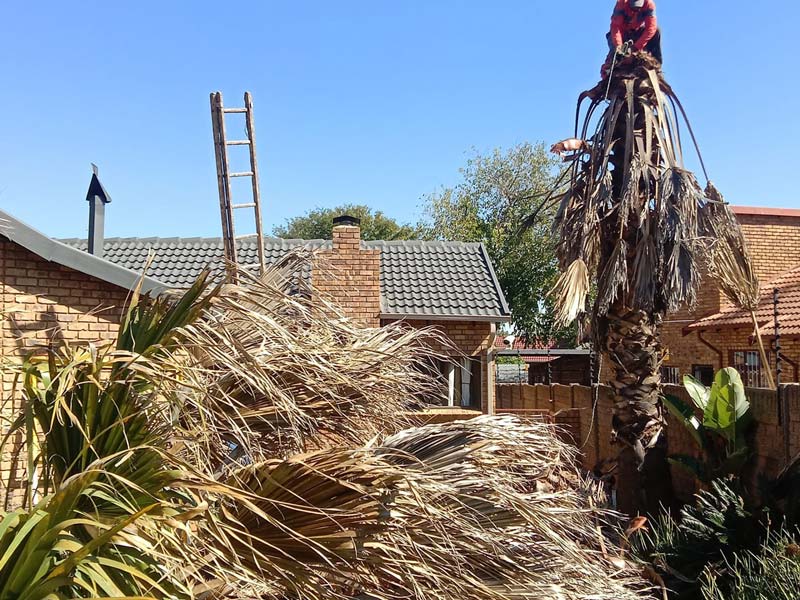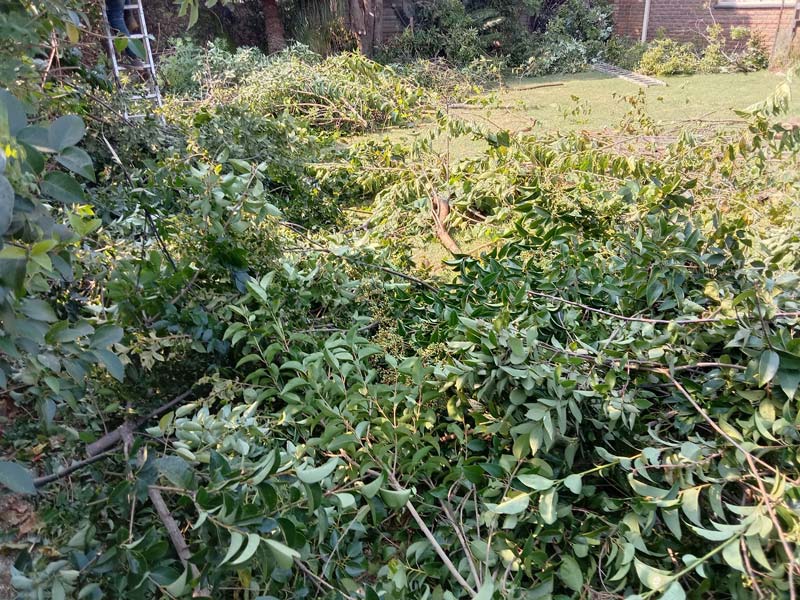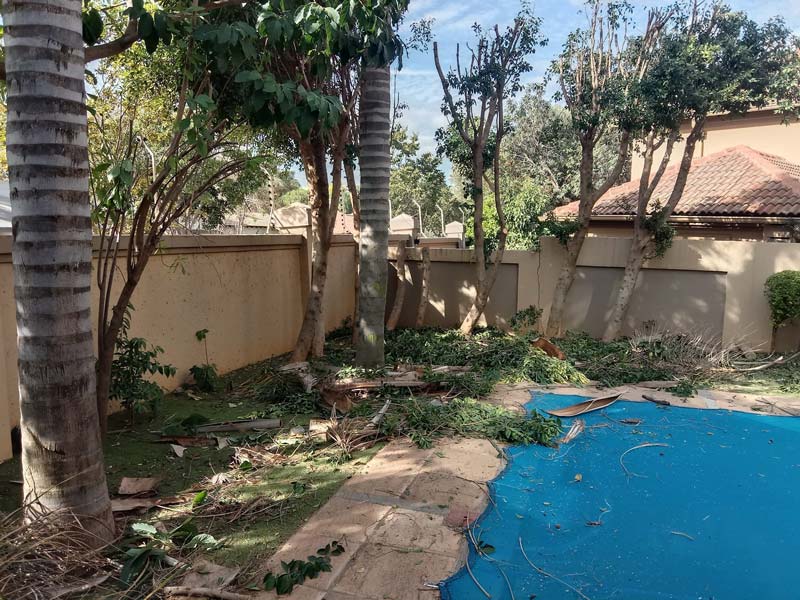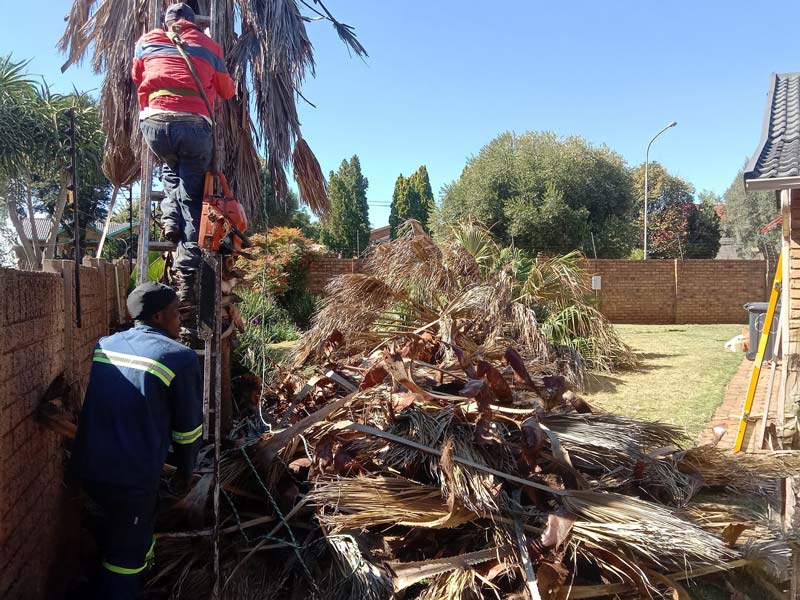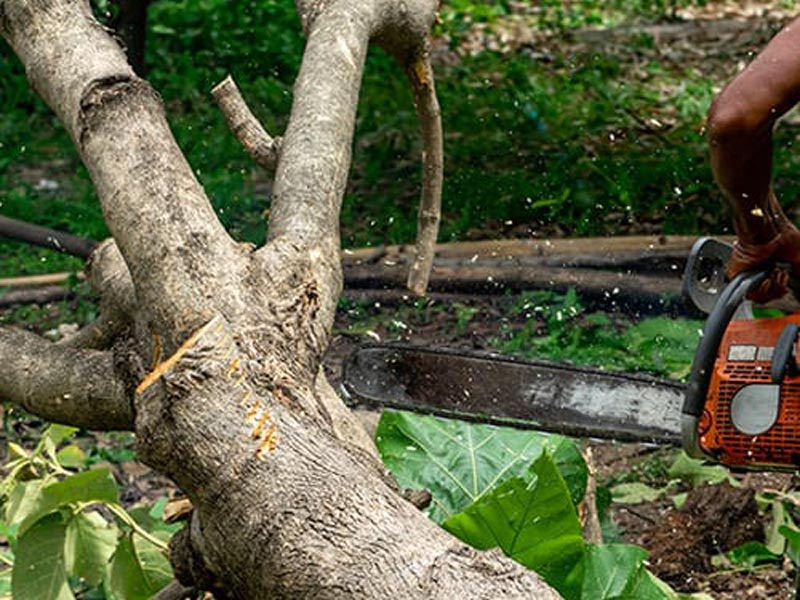Replanting in Pretoria East requires careful consideration of local soil characteristics. The soil often consists of lithomorphic types with both sandy and poorly drained layers. Proper preparation after grinding involves mixing in organic materials such as compost and ensuring adequate drainage. For planting, small trees should be spaced 10 ft apart, while larger varieties need greater distances. Regular irrigation and nutrient management are essential to nurture growth and prevent deficiencies. Uncover additional tips for successful replanting in this region.
Soil Characteristics in Pretoria East
Grasping the soil characteristics in Pretoria East is vital for successful replanting after tree grinding. The region’s soil composition primarily consists of lithomorphic soils and is influenced by colluvial sands.
Significantly, drainage issues arise from varying soil textures, shifting from well-drained sandy soils to poorly drained calcareous types. pH levels range from slightly acidic to alkaline, impacting nutrient availability essential for plant growth. Understanding parent material is crucial as it influences the overall soil properties, which in turn affect plant health and growth.
Soil profiles often include clay minerals, affecting water retention and aeration. Recognising these factors can help establish ideal planting conditions, ensuring better root development and ultimately promoting healthy vegetation in the environment.
Soil Preparation After Grinding
Effective soil preparation following stump grinding is vital for successful replanting.
First, removing wood chips and mixing them with soil can improve soil texture and prevent nitrogen depletion. Gradual layering of fill soil and the application of nutrient-enriched topsoil will create a stable foundation for roots. Moreover, wood chips draw nitrogen from the soil, which can hinder grass growth if not adequately addressed. Introducing organic matter, such as compost, enhances soil fertility and drainage properties. Furthermore, incorporating soil conditioners and aerating the area guarantees healthy microbe activity and moisture retention. Additionally, ensuring the soil is backfilled and levelled properly is essential for stable ground to support new planting.
Planting Spacing Recommendations
Plant spacing is essential for the successful establishment and long-term health of trees and shrubs in any environment. Proper spacing guidelines play a vital role in ensuring healthy growth and minimising conflicts with structures. Below is a concise overview of recommended distances based on tree selection:
| Tree Size | Recommended Distance |
|---|---|
| Small Trees | 10 ft |
| Medium Trees | 15 ft |
| Large Trees | 20 ft |
Maintaining these distances allows for ideal growth, minimises competition for resources, and improves the safety and aesthetics of planted areas. Additionally, consider implementing safe methods such as controlled lowering techniques during planting to prevent damage to surrounding areas. Take your time to evaluate these guidelines for a flourishing setting.
Soil Moisture and Irrigation Considerations
Comprehending the implications of soil moisture management is vital for successful tree replanting in Pretoria East’s sandy soils.
These soils typically exhibit low water retention, requiring diligent irrigation scheduling to ensure trees receive adequate moisture. After replanting, the rapid drainage of soil necessitates frequent, smaller watering sessions to maintain ideal conditions for root establishment.
Moisture monitoring is fundamental, as soil dryness can occur swiftly without intervention. Utilising sensors can help detect fluctuations in soil water content at various depths, guiding irrigation practices.
Nutrient Management After Replanting
Addressing nutrient management following replanting is vital for establishing healthy and resilient trees in Pretoria East.
To improve nutrient cycling, gardeners should apply slow-release fertilisers every three months, customised to seasonal needs. Organic amendments such as compost or wood chips can enhance soil structure and nutrient availability while suppressing weed competition.
Performing pre-planting soil tests is essential for identifying nutrient deficits and appropriately adjusting fertilisation practices. Regular monitoring of tree health and nutrient uptake will help prevent imbalances and promote vigorous growth.
This proactive approach to nutrient management guarantees a thriving environment for replanted trees, nurturing a sustainable environment for the community.
